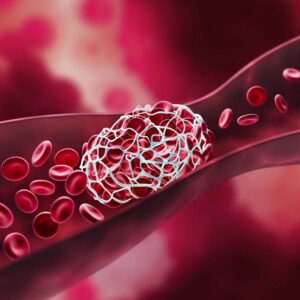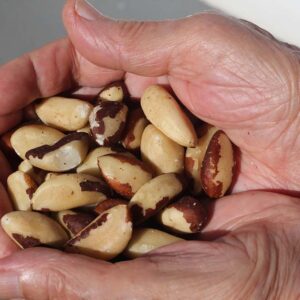
Three “Foods” You Should Never Feed Your Pet
- Three toxins found in popular dog treats. Find out more…
- Revealed: the trouble with table scraps. These two common seasonings could be deadly.
- Discover two foods you can feel good about giving to your best buds.
Dear Living Well Daily Reader,
Wheat flour… soy flour… corn syrup, really!?
Wait… that can’t be right…
That’s the only natural ingredient… and it’s toxic to dogs!
A couple weeks ago, a friend and I went shopping for pet supplies.
My friend, who is a meticulous eater, is even pickier when it comes to her pup. So when she started to read off the ingredients in Snausages, a popular dog treat, she was blown away.
And frankly, I was too.
Once I took a deeper look at the label, I couldn’t believe the garbage that pet treats are made of. But what was even more upsetting, the only natural food in the treat is toxic to dogs.
In fact, it can even be deadly. We will reveal exactly what it is in just a minute Plus, we’ll provide you with few healthy treat solutions for your treasured companions.
After scoping the several labels, including those of “pet-friendly” sandwich cookies and non-nutritional slop shaped like chicken bones and toothbrushes, I soon realized that they were all bad news!
I’ve narrowed down the top three most common unhealthy ingredients being passed off as “foods” for cats and dogs – while they all were upsetting, the last one was downright shocking!
![]() 1. Sugar
1. Sugar
Sugar is hiding in many treats. This includes ingredients like corn syrup, dextrose, and molasses. While molasses may be the least offensive here, added sugars serve no nutritional purpose for your cat or dog, just as they don’t for you. It’s not classified as toxic to either species though it may lead to obesity, diabetes, and tooth decay in your pet.
When it comes to our feline friends, there’s absolutely no need to bother with sugar — they can’t even taste it. Research from the Monell Chemical Senses Center shows that cats lack the genetic coding linked to tasting sweet foods. This means any added sugar in your cat’s treats isn’t providing pleasure but instead setting your little buddy up for health issues.
![]() 2. Wheat, Corn, Soy
2. Wheat, Corn, Soy
All the treats I investigated had some form of wheat, corn, or soy. Right off the bat, this means there are GMOs in your pet’s treats. And where there are GMOs, there could be glyphosate, which might mean trouble for your pet’s stomach.
Per Dr. Michael Fox DVM, health conditions like allergies, skin and organ issues, and inflammatory bowel disease may be consequences of feeding your pets foods and treats with GMO products.
In addition to the GMO issue, dogs are selective omnivores and cats are carnivores. Evolutionarily speaking, it doesn’t make sense to feed animals grains. Due to their primitive digestive systems, dogs and cats have don’t have the gastric support to break down cereal grains. This means these hard-to-digest fibers may remain undigested and could eventually lead to the same types of digestive issues associated with GMOs.
That being said, it doesn’t mean the occasional veggie or plant-based treat isn’t right for your pet. We will share few options in a bit.
![]() 3. Garlic and Onions
3. Garlic and Onions
All members of the Allium species of plants are highly toxic to dogs and cats. These include onions, garlic, leeks, shallots, chives, and scallions. Once ingested, these plants can cause red blood cell damage. In a toxic dose, this can result in anemia, internal organ damage or failure, and even death.
And that’s why I was shocked to see garlic powder as a listed ingredient for Snausages. It’s impossible to know the amount of garlic powder in these, but any amount has the potential to cause a dangerous reaction.
Also, since garlic and onions are such popular seasonings in human foods, Allium poisoning is one reason why table scraps are discouraged as treats, unless they are unseasoned.
![]() Full Flavor, No Threat
Full Flavor, No Threat
By now you may be thinking, Are any treats safe for my pets?
The answer is yes.
But you won’t find many in the aisles of your local pet store.
You see, even many grain-free and natural pet treats still have added sugars in them. So it’s in your pet’s best interest to provide them with an unprocessed treat.
Here are two to get you started:
![]() Carrots and Green Beans
Carrots and Green Beans
For dogs, raw carrots and green beans are good choices. Just be sure to chop them small to prevent any choking hazards. If your buddy is a little older, cooking these veggies is a good idea, especially if they have dental or digestive issues. Be sure to skip the seasonings.
While cats don’t require any veggies in their diets, it’s fun to give them an occasional treat. Carrots and green beans that are cooked without seasoning and chopped finely make for good cat treats without added toxins.
Live well,

Natalie Moore
Managing editor, Living Well Daily
Sources
[2] Strange but True: Cats Cannot Taste Sweets
[3] Herbicide Glyphosate found in Pet Foods
[4] Is Grain Free Dog Food the Way to Go?
Written By Natalie Moore
Natalie Moore is a dedicated health researcher with a passion for finding healthy, natural, and science-based solutions. After a decade of direct healthcare experience in western and natural medicine, she was involved in public health research before joining Living Well Daily.
View More Free Articles
Take the SHORTER Path to Dramatically Better Health
Are you tired of fitness gurus preaching the virtues of 5 AM workouts and pushing Olympic-level training regimens? Their narrative can feel exhausting and entirely unattainable. But before you toss in the towel completely, I’ve got news that might just put a spring back into your step. A groundbreaking new study reveals that the key...
Unexpected Perks of Your Coffee Habit Revealed!
We all know that the first cup of coffee in the morning can FEEL like a lifesaver. But what if it might actually BE saving your life? A groundbreaking new study suggests that your daily coffee habit could be protecting you from not just one but multiple chronic diseases. Let’s pour over this fascinating research…...
The TRUTH About Diabetes Drugs and Brain Aging
You’ve probably seen the gushing headlines… Most say something like, “Common diabetes drug protects the brain against aging!” And let’s face it, that sounds fantastic. After all, who doesn’t want to keep their brain young and in tip-top shape? The headlines refer to the results of a new study that suggests the widely prescribed type...
Hidden Smartphone Danger Puts You at Risk
Remember when we thought cell phones were just something for young folks to obsess over? Back when we were convinced they were nothing more than a passing fad? Well, times certainly have changed. Now, most people… including many of us older folks… have jumped on the smartphone bandwagon. Heck, some of us are practically as...
Preserve Your Mobility with “Agile Aging” Exercises
Aging has a way of humbling us. You lose hair where you want to keep it—and often end up growing it where you don’t. With every passing year, your eyesight fades, and your waistline expands. And as your once quick pace begins to slow, you fear developing the dreaded “senior shuffle.” But here’s the thing....
Yes, Lazy Saturday Lie-Ins Can BOOST Your Health
Are you burning the midnight oil during the week and catching up on sleep on weekends? Well, I’ve got some news that might help you feel less guilty about those lazy Saturday mornings. A new study suggests that weekend lie-ins might be doing far more than just helping you feel refreshed. Experts say they could...
Mailbag: 7 Hidden Culprits Behind Your Weight Gain
“Why am I gaining weight, even though I am watching what I am eating?” – Battling the Bulge Dear Battling, Gaining weight when you’re not trying to is frustrating. And it just gets worse as we age… often regardless of our diet. The truth is that various factors can promote weight gain even when you’re...
Popular Artificial Sweetener Linked to Dangerous Heart Risk
Remember when erythritol was the darling of the health food world? Well, this popular sugar substitute might not be as sweet a deal as we were led to believe… A shocking new study reveals a dark side to this widely used artificial sweetener. It turns out erythritol is associated with a dangerous—and even deadly—heart risk....
Cracking the Code on Chronic Inflammation
Inflammation and obesity are the evil tag team at the heart of nearly every major disease we face—from diabetes to obesity. What starts as a normal, healthy process to fend off dangerous invaders can quickly fan into the flames of chronic inflammation… and that includes in your gut. The trouble is almost no one has...
Dreaming of Better Sleep? Your Gut Holds the Key
Do you toss and turn at night? If so, you’re not alone. In fact, if you’re a senior over 65, you join nearly 17 percent of your peers who ALSO struggle with poor sleep quality. But science has uncovered a natural supplement that not only could help you catch more Z’s but can also give...









